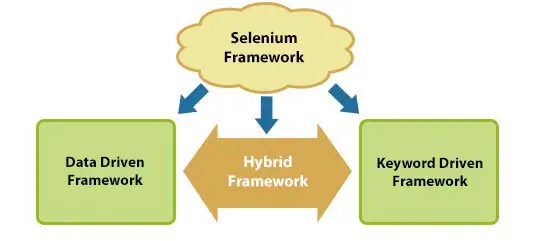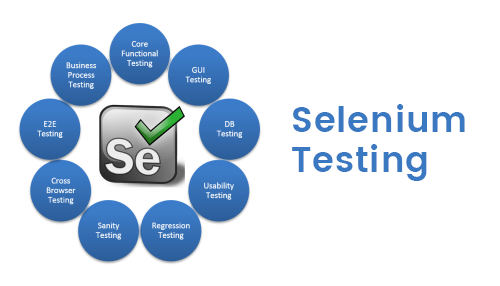What is Selenium Framework?
Selenium framework is a code structure that makes code maintenance easier and code readability better. A framework involves breaking the entire code into simpler pieces, which test a particular functionality.
The code is structured in a way that separates the ‘data set’ from the actual ‘test case’ that will test the web application functionality. Also, you can structure the code in a way wherein, the test cases to be executed are called (invoked) from an external application(like a .csv).
There are numerous frameworks out there, but three commonly used Selenium automation testing framework(s) are:
1. Data Driven Framework
2. Keyword Driven Framework
3. Hybrid Framework

Why Do We Need A Selenium Test Automation Framework?
Without a proper framework, there will be a test case to compromise on the entire test functionality. And a single test case can rise up to a million lines of code. So it is obvious that the test cases so bulk will be difficult to read. Even if you want to modify any functionality later, then you will have a tough time modifying the code.
With the implementation of the Selenium test automation framework, it will result in smaller but multiple code pieces that will have various benefits.
How to Build a Maintainable Selenium Framework?
Here’s the outline of the major steps to build a maintainable Selenium test automation framework.
1. Choose a programming language
2. Choose a unit test framework
3. Design the framework architecture
4. Build the SeleniumCore component
5. Build the SeleniumTest component
6. Choose a reporting mechanism
7. Decide how to implement CI/CD
8. Integrate your framework with other tools
Benefits of Selenium Framework
1. Improved code readability
2. Higher portability
3. Increased code reusage
4. Reduced script maintenance
Now that you know the basics of frameworks, let’s explain them briefly.
DATA DRIVEN FRAMEWORK
This is the technique of separating the data set from the actual test case. This framework in Selenium completely depends on the input test data. The test data is fed from external sources like .CSV file, excel file, or any database.
As the test case is separated from the data set, you can easily modify the test case of a particular functionality without making complete changes to your code. Besides this, you can also control how much data needs to be tested. You can increase the test parameters number so that you can add more username and password fields to the excel file.
KEYWORD DRIVEN FRAMEWORK
In this technique, all the operations and instructions to be performed are written separately from the actual test case. It’s similar to the Data Driven Framework in a way that, the operations to be performed are stored in an external file like an excel sheet.
The advantage with the keyword driven framework is that you can simply control the functionalities that you want to test. Specify the methods to test the functionality of the application in the excel file, so that only those names will be tested.
HYBRID FRAMEWORK
This is the method where one can best use both the Data and Keyword Driven framework. You can build a Hybrid framework by storing the methods to execute in an excel file (keyword driven approach) and passing these method names to the Java Reflection Class (data driven approach) instead of creating an If/Else loop in the “DriverScript” class.
Why Use Selenium Framework for Automated Browser Testing?
Here are the benefits of Selenium framework for automation testing:
1. Community Support: The Selenium community is quite open and active. So, there’s a lot of information and help available when required.
2. Easy Implementation: Selenium webdriver test automation framework is a user-friendly automation tool. Being open-source, users can develop extensions for their needs.
3. Reusability: Scripts written for Selenium WebDriver is cross-browser compatible. Testers can run multiple testing scenarios with the same base.
4. Language Support: Multilingual support is the biggest benefit of the Selenium framework. It supports all major languages such as PHP, .NET, Ruby, Python, Java, Javascript, Perl, and C Sharp giving developers tremendous flexibility and freedom.
5. Open-Source: Selenium is open-source. This means it does not involve any cost and requires no licensing. You are free to download and use. However, this is not the case with other automation frameworks out there.
6.Operating System, Browser, and Device Support: Selenium webdriver test automation framework supports many different OS such as Mac, Linux, Windows, and browsers such as Safari, Edge, Opera, IE, Safari.
I hope this post was useful to you and gave you a clear, concise understanding of what a Selenium Framework is, how to build your code structure using the three Selenium frameworks, and how Selenium test automation framework is beneficial.
If you wish to learn more about Selenium Framework and the services we provide, contact OdiTek Solutions today for a demo!







